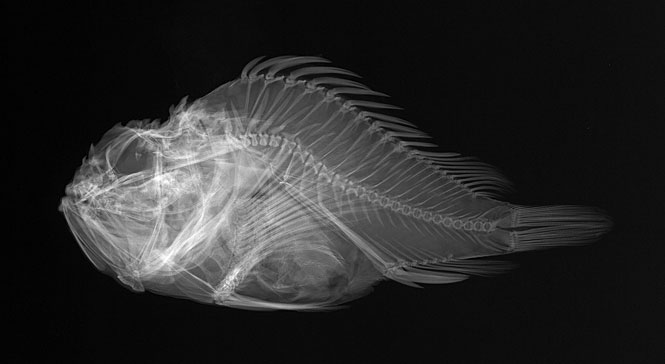Shortsnout Scorpionfish X-Ray, 1908
Smithsonian scientists use X-ray images like this one to gather important information about the internal biology of a fish without dissecting or in any other way altering the specimen.
This X-ray shows a Shortsnout Scorpionfish (Scorpaenopsis obtuse). It has venomous glands in the spines of the fins, which can deliver a powerful, numbing toxin. This specimen was collected in the Philippines in 1908, but it was not named as a new species until 2001.
The Smithsonian’s National Collection of Fishes at the National Museum of Natural History is the largest and most diverse collection of its kind. The collection comprises an estimated 4 million individual fish specimens representing more than 70 percent of the world’s fish species. These specimens serve as a historical record of fish biodiversity and a working reference library for scientists around the world.
This photo is one of 137 million artifacts, works of art and specimens in the Smithsonian’s collection. It is currently on display in the “X-Ray Vision: Fish Inside Out” exhibition at the National Museum of Natural History.
All X-rays and fish photographs were taken by Sandra J. Raredon, museum specialist in the Division of Fishes at the National Museum of Natural History.
For more info on “X-Ray Vision: Fish Inside Out,” visit the exhibition website.
To learn more about each of the fish species featured, visit the Encyclopedia of Life.



